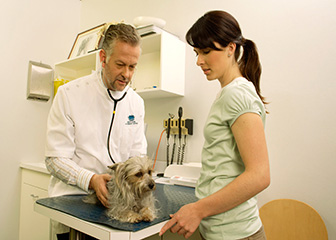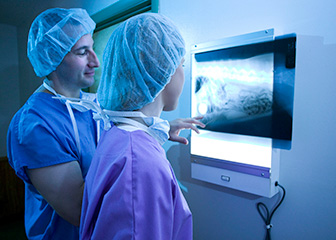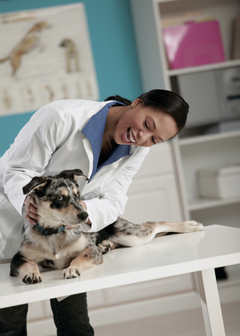
Veterinarians can choose specialties such as companion animals or farm animals.
Veterinarians must have a Doctor of Veterinary Medicine degree and a state license.
Education
Veterinarians must complete a Doctor of Veterinary Medicine (D.V.M. or V.M.D.) degree at an accredited college of veterinary medicine. There are currently 28 colleges with accredited programs. A veterinary medicine program generally takes 4 years to complete and includes classroom, laboratory, and clinical components.
Although not required, most applicants to veterinary school have a bachelor's degree. Veterinary medical colleges typically require applicants to have taken many science classes, including biology, chemistry, anatomy, physiology, zoology, microbiology, and animal science. Some programs also require math and humanities or social science courses.
Admission to veterinary programs is competitive, and less than half of all applicants were accepted in 2010.
In veterinary medicine programs, students take courses on normal animal anatomy and physiology, as well as disease prevention, diagnosis, and treatment. Most programs include 3 years of classroom, laboratory, and clinical work. Students typically spend the final year of the 4-year program doing clinical rotations in a veterinary medical center or hospital. In veterinary schools today, increasingly, courses also include general business management and career development classes to help new veterinarians learn how to effectively run a practice.
Licenses
All states and the District of Columbia require veterinarians to have a license. Licensing requirements vary by state, but all states require prospective veterinarians to complete an accredited veterinary program and to pass the North American Veterinary Licensing Exam.
Most states require not only the national exam but also have a state exam that covers state laws and regulations. Few states accept licenses from other states, so veterinarians who want to be licensed in a new state must usually take that state's exam.
Training
Although graduates of a veterinary program can begin practicing once they receive their license, many veterinarians pursue further education and training. Some new veterinary graduates enter 1-year internship programs to gain experience. Internships can be valuable experience for veterinarians who apply for competitive or better paying positions or in preparation for a certification program.
Certification
The American Veterinary Medical Association offers certification in 40 different specialties, such as surgery, microbiology, and internal medicine. Although certification is not required for veterinarians, it can show exceptional skill or expertise in a particular field. To sit for the certification exam, veterinarians must have a certain number of years of experience in the field, complete additional education, or complete a residency program, typically lasting 3 to 4 years. Requirements vary by specialty.
Work Experience
When deciding whom to admit, some veterinary medical colleges weigh experience heavily. Formal experience, such as work with veterinarians or scientists in clinics, agribusiness, research, or some area of health science, is particularly advantageous. Less formal experience, such as working with animals on a farm, at a stable, or in an animal shelter, can also be helpful.
Important Qualities
Compassion. Veterinarians must be compassionate when working with animals and their owners. They must treat animals with kindness and must be sensitive when dealing with the owners of sick pets.
Decision-making skills. Veterinarians must decide the correct method for treating the injuries and illnesses of animals. Deciding between euthanizing and treating a sick animal, for instance, can be very difficult.
Interpersonal skills. Strong communication skills are essential for veterinarians, who must be able to explain treatment options to animal owners and give instructions to their staff.
Management skills. Management skills are important for those veterinarians who are in charge of running private clinics or laboratories. In these settings, they are responsible for providing direction, delegating work, and overseeing daily operations.
Manual dexterity. Manual dexterity is important for veterinarians because they must control their hand movements and be precise when treating injuries and performing surgery.
Problem-solving skills. Veterinarians need strong problem-solving skills because they must figure out what is ailing animals. Those who test animals to determine the effects of drug therapies also need excellent diagnostic skills.











